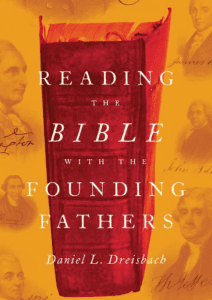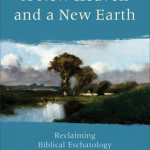 Standing alongside the garden, Cain and Abel, and the Flood we have a fourth classic Sunday School tale in the early chapters of Genesis, the Tower of Babel (2242 BC according to Bishop Ussher). This is followed within a couple hundred years by Abram’s move from Ur to Haran to the land of Canaan, his wandering to Egypt and back again to Canaan.
Standing alongside the garden, Cain and Abel, and the Flood we have a fourth classic Sunday School tale in the early chapters of Genesis, the Tower of Babel (2242 BC according to Bishop Ussher). This is followed within a couple hundred years by Abram’s move from Ur to Haran to the land of Canaan, his wandering to Egypt and back again to Canaan.
The Tower of Babel is a tale that defies a literal reading. At least today it defies a literal reading. When the world seemed “small” and confined to a bubble around one location, with fuzzy ideas of what might (or might not) lie just outside the known … then it was possible to conceive of but one language until ca. 4200 years ago followed by diaspora populating the earth. Today, with a better understanding of the development of language and of the range of human populations and cultures dotting the earth ca. 4200 years ago, not to mention 10000 years ago and more, it is a different matter. There is abundant evidence of human population in the Americas 10,000 to 13,000 years ago and potential (contested) evidence for human population in the Americas as much 10,000 to 20,000 years earlier. The best evidence suggests that Australia was first populated about 50,000 years ago, the earliest settlements of modern humans in Great Britain are at least 30,000 years old, the oldest complete skeleton some 9000 years old. And then we have the question of language … the idea of one language until just before Abraham, with the settling of Egypt after Babel, strains credulity. After all, the oldest ancient Egyptian hieroglyphs date to something like 5000 years ago, a little more recent than Sumerian cuneiform which originated something like 5500 years ago, and there is little likelihood these very early written languages represent similar spoken languages. In fact, there is some evidence that a written Chinese language may have also developed some 5000 years ago, possibly more.
Given this current state of affairs, how should we read the story of Babel in Genesis 11:1-9 (NIV below)?
Now the whole world had one language and a common speech. As people moved eastward, they found a plain in Shinar and settled there.
They said to each other, “Come, let’s make bricks and bake them thoroughly.” They used brick instead of stone, and tar for mortar. Then they said, “Come, let us build ourselves a city, with a tower that reaches to the heavens, so that we may make a name for ourselves; otherwise we will be scattered over the face of the whole earth.”
But the Lord came down to see the city and the tower the people were building. The Lord said, “If as one people speaking the same language they have begun to do this, then nothing they plan to do will be impossible for them. Come, let us go down and confuse their language so they will not understand each other.”
So the Lord scattered them from there over all the earth, and they stopped building the city. That is why it was called Babel—because there the Lord confused the language of the whole world. From there the Lord scattered them over the face of the whole earth.
The text has elements of a etiological story, that is a story designed to explain an observed phenomenon (in this case the diversity of human languages and peoples). It seems unlikely, however, that this is the reason the story is included in Genesis. It seems more likely that the story of Babel is included in the prehistory leading up to Abram for theological reasons more significant than the origin of human tongues.
 John Walton lends some insight into the story of The Tower of Babel in his NIVAC Commentary on Genesis and his Zondervan Illustrated Bible Background Commentary on Genesis. (Walton reads the story more literally than I am inclined to – but his insights are always interesting and help to illuminate the passage.)
John Walton lends some insight into the story of The Tower of Babel in his NIVAC Commentary on Genesis and his Zondervan Illustrated Bible Background Commentary on Genesis. (Walton reads the story more literally than I am inclined to – but his insights are always interesting and help to illuminate the passage.)
First he notes that the word translated “earth” in this passage probably didn’t mean to the ancient audience what it suggests to us today.
The mention of “all the earth” five times in nine verses gives the modern reader a universal feel to the passage, but that sense may be somewhat mitigated when we recall that the Hebrew word translated “earth” also often means “land” and is more narrowly defined. We can not afford to jump to unwarranted conclusions about the universality of the references; decisions have to be made on a case by case basis. (NIVAC Commentary p. 371-372)
Any accurate interpretation of the passage should take into account the mindset and view of the ancient Near Eastern audience. That the story should be interpreted to represent a local event rather than a global event is within the realm permitted by the language. The ancient Near Eastern audience knew nothing of Great Britain, China, Australia, or the Americas. The “land” was a local region.
The discussion of burnt bricks is consistent with a location in southern Mesopotamia. Walton suggests that the story might be placed at the end of the fourth millennium B.C. when urbanization began in Mesopotamia. Stones were not available and burnt bricks were the state-of-the-art in durable building material.
In both commentaries Walton notes that:
One single architectural feature dominated the landscape of early Mesopotamian cities: towers known as ziggurats. In the earliest stages of urbanization, the city was not designed for the private sector. People did not live in the city. Instead it was comprised of the public buildings, and granaries, which were mostly connected with the temple. Consequently, the city was, in effect, a temple complex. (ZIBBC p. 61)
So what about the ziggurat? This is where I find some important insights in Walton’s discussion. The ziggurat served no known common purpose. It had no inside, it was constructed as a “hill” for a reason.
It was sacred space and was strictly off limits for profane use. Though the structure at the top was designed to accommodate the god, it was not a temple where people would go to worship. In fact, the ziggurat was typically accompanied by an adjoining temple where worship did occur. (ZIBBC p. 62)
Walton points to the names of the ziggurats for insight: “temple of the foundation of heaven and earth,” or “temple that links heaven and earth” and most significantly “temple of the stairway to pure heaven.” This was a stairway of the gods, not one for humans.
At the top of the ziggurat was the gate of the gods, the entrance to their heavenly abode. At the bottom was the temple, where hopefully the god would descend to receive the gifts and worship of his people.
…
In summary, the project the Bible describes is a temple complex featuring a ziggurat, which was designed to make it convenient for the god to come down to his temple, receive worship, and bless his people. The key for this passage is to realize that the tower was not built so that people could ascend to heaven, but so that deity could descend to earth. (ZIBBC p. 62-63)
But the Lord was not pleased with this stairway for the gods being constructed in Babel, or with ancient Mesopotamian forms of religion. In Genesis for Normal People Enns and Jared Byas note:
Since the gods were up there somewhere, building a “stairway to heaven” was an attempt to get in touch with the gods. By contrast, Israel’s worship structures (the tabernacle and later the temple) don’t have steps going up to heaven. Instead, Israel waits for God to come down. (End of Ch. 7)
Walton seems to take the story of the Tower of Babel as literal but local. He is open to the possibility that the connection with Babylon is not an indication of the location of the tower of Babel, but that it was “an indication of where the final result can be observed rather than as the name of the city they are building.” (NIVAC p. 378) According to Walton:
The text conveniently picks up on the meaning of “confusion” through the Hebrew root bbl, which sounds like the Hebrew word for Babylon (bbl), though the popular etymology of Babylon in Mesopotamian was that it meant “gate of the gods” [Akkadian bab-ilu]. (NIVAC p. 378)
Enns and Byas are more explicit. They see the story of the tower and the play on words surrounding the term “Babel” as a “brilliant political satire” with a theological purpose as the compiler of Genesis (at the time of the exile) told the story of the origin of the people of Israel as God’s people called out of Babylon and away from Babylonian religious practices.
The story isn’t a condemnation of urbanization, it isn’t a condemnation of the use of burnt brick, or of human cooperation. It isn’t even about human conceit as they try to become like God and reach the heavens (this isn’t the ancient context of the ziggurat). It isn’t a historical account of the origin of languages or of the scattering of people throughout the earth. It seems (to me, at least) that the significance of the story has to lie in the religious significance of the ziggurat, ancient Mesopotamian religious practice, and what it means to be the people of the one true Creator God YHWH. Babylon is not the “gate of the gods” in any real sense. Israel is the true people of God.
From Babel the story moves (after a genealogical interlude) to the calling of Abram from Ur to Haran (with his father Terah) and onto Canaan.
The Lord had said to Abram, “Go from your country, your people and your father’s household to the land I will show you.
“I will make you into a great nation,
and I will bless you;
I will make your name great,
and you will be a blessing.
I will bless those who bless you,
and whoever curses you I will curse;
and all peoples on earth
will be blessed through you.” (Gen. 12:1-3)
What do you think?
What is the significance and intent of the story of the Tower of Babel?
If you wish to contact me directly you may do so at rjs4mail [at] att.net.
If interested you can subscribe to a full text feed of my posts at Musings on Science and Theology.















